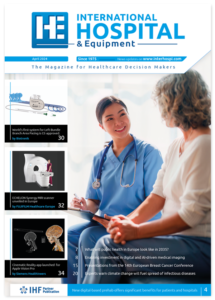New NICE medical technologies guidance supports the use of a device that can detect atrial fibrillation whilst blood pressure is being measured.
Using WatchBP Home A in the NHS for opportunistically detecting asymptomatic atrial fibrillation during the measurement of blood pressure by primary care professionals, is backed by the NICE guidance. The recommendations note that using WatchBP Home A could increase the detection rate of atrial fibrillation, which would allow preventative treatment to be given to reduce the incidence of atrial fibrillation-related stroke.
The guidance also recommends that WatchBP Home A should be considered for use in people with suspected hypertension (high blood pressure) or those being screened for hypertension in primary care. People with suspected atrial fibrillation should have an electrocardiogram (ECG) in line with NICE clinical guideline 36, Atrial fibrillation.
Hypertension is defined by a consistent blood pressure reading on different occasions of 140/90mmHg or higher. If left untreated, high blood pressure increases the risk of a heart attack or stroke. Atrial fibrillation is a heart condition that causes an irregular and often abnormally fast heart rate, and is the most common heart rhythm disturbance. It can lead to dizziness, shortness of breath and palpitations, but some people have no symptoms and so are not aware that their heart rate is irregular.
The WatchBP Home A device is a blood pressure monitor which automatically detects pulse irregularity that may be caused by symptomatic or asymptomatic atrial fibrillation, whilst it records blood pressure. Blood pressure is taken using a cuff which fits around the upper arm, and which is connected to a small unit which records the reading. The monitor can be used for diagnosing hypertension in a clinical setting with the measurement taken under the supervision of a clinician.
Professor Carole Longson, Director of the NICE Centre for Health Technology Evaluation, said: ‘We are delighted to publish this new guidance supporting the use of Watch BP Home A for picking up atrial fibrillation whilst blood pressure is being measured in some people. The evidence considered by the independent Medical Technologies Advisory Committee (MTAC) indicates that the device can offer advantages in detecting atrial fibrillation opportunistically whilst measuring blood pressure, and that using the device in primary care could increase the detection rate of atrial fibrillation compared with taking the pulse by hand. This would allow preventative treatment to be considered to reduce the incidence of atrial fibrillation-related stroke. The guidance is not about screening for atrial fibrillation, but about the benefits that the device offers in helping to pick up atrial fibrillation by chance in people with suspected high blood pressure or those being screened for high blood pressure, in primary care.
‘Using WatchBP Home A is associated with estimated overall cost savings per person screened of between

